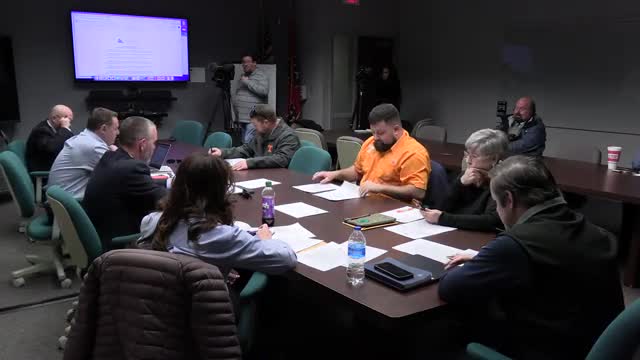State scholarship program raises concerns over accessibility for disadvantaged students
January 15, 2025 | Sullivan County, School Districts, Tennessee
This article was created by AI summarizing key points discussed. AI makes mistakes, so for full details and context, please refer to the video of the full meeting. Please report any errors so we can fix them. Report an error »

In a recent meeting of the Sullivan County Board of Education, significant discussions centered around the implications of a new scholarship program that aims to provide financial assistance to students in Tennessee. The program, which will award a maximum of 20,000 scholarships, has raised concerns regarding its accessibility and fairness, particularly for disadvantaged students.
The scholarship initiative stipulates that 10,000 of the awards will be allocated to families whose incomes do not exceed 300% of the federal poverty level. This threshold has sparked debate, as critics argue that it may exclude many low-income families. For instance, a household earning $171,000 would still qualify under this rule, leading to questions about whether the program truly serves its intended purpose of aiding disadvantaged students.
Concerns were also raised about the criteria used to determine eligibility for future scholarships. Starting in the 2026-2027 school year, the number of scholarships available will depend on the funds appropriated and the number of applications received. If applications exceed 75% of the available scholarships, the following year’s allocation could increase. However, this system may inadvertently favor wealthier households, as those who received scholarships in the previous year will have priority in subsequent years.
The meeting highlighted the potential long-term consequences of the scholarship program on public education funding. Participants expressed worries that a shift towards private school vouchers could lead to a decrease in public school resources. This could result in fewer teachers and reduced contributions to pension plans, ultimately jeopardizing the financial stability of the education system.
Moreover, the discussion touched on the selective nature of private schools, which may not accept students from disadvantaged backgrounds, further complicating the equity of the scholarship program. Critics argue that the current framework incentivizes private institutions to choose students based on criteria that may not align with the program's goals of inclusivity.
In conclusion, the Sullivan County Board of Education's meeting underscored the complexities surrounding the new scholarship program. As the community grapples with these issues, the board faces the challenge of ensuring that the program effectively supports those it is designed to help while maintaining the integrity of public education. The next steps will involve monitoring the implementation of the scholarship criteria and addressing the concerns raised by community members to foster a more equitable educational landscape.
The scholarship initiative stipulates that 10,000 of the awards will be allocated to families whose incomes do not exceed 300% of the federal poverty level. This threshold has sparked debate, as critics argue that it may exclude many low-income families. For instance, a household earning $171,000 would still qualify under this rule, leading to questions about whether the program truly serves its intended purpose of aiding disadvantaged students.
Concerns were also raised about the criteria used to determine eligibility for future scholarships. Starting in the 2026-2027 school year, the number of scholarships available will depend on the funds appropriated and the number of applications received. If applications exceed 75% of the available scholarships, the following year’s allocation could increase. However, this system may inadvertently favor wealthier households, as those who received scholarships in the previous year will have priority in subsequent years.
The meeting highlighted the potential long-term consequences of the scholarship program on public education funding. Participants expressed worries that a shift towards private school vouchers could lead to a decrease in public school resources. This could result in fewer teachers and reduced contributions to pension plans, ultimately jeopardizing the financial stability of the education system.
Moreover, the discussion touched on the selective nature of private schools, which may not accept students from disadvantaged backgrounds, further complicating the equity of the scholarship program. Critics argue that the current framework incentivizes private institutions to choose students based on criteria that may not align with the program's goals of inclusivity.
In conclusion, the Sullivan County Board of Education's meeting underscored the complexities surrounding the new scholarship program. As the community grapples with these issues, the board faces the challenge of ensuring that the program effectively supports those it is designed to help while maintaining the integrity of public education. The next steps will involve monitoring the implementation of the scholarship criteria and addressing the concerns raised by community members to foster a more equitable educational landscape.
View full meeting
This article is based on a recent meeting—watch the full video and explore the complete transcript for deeper insights into the discussion.
View full meeting
